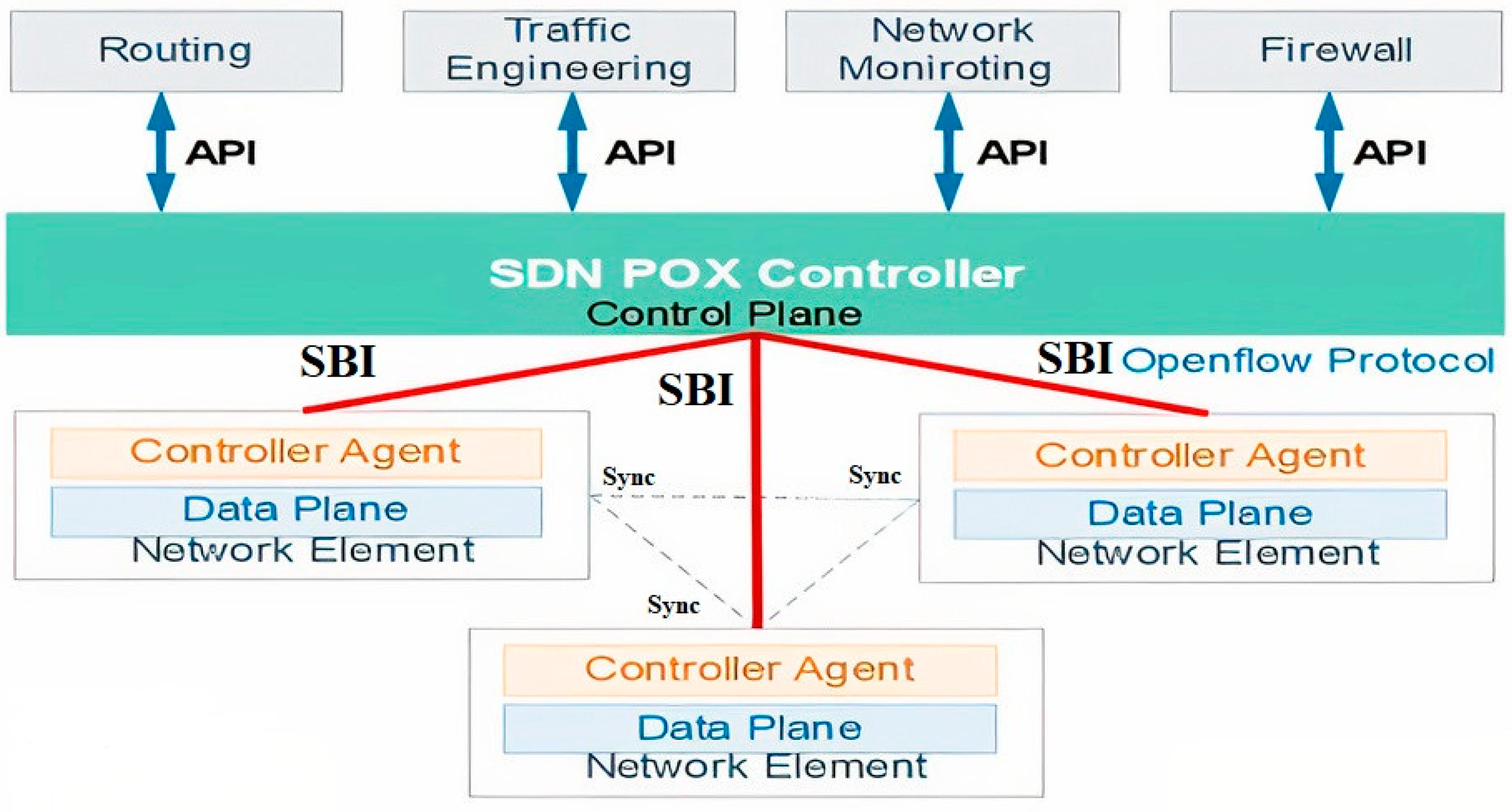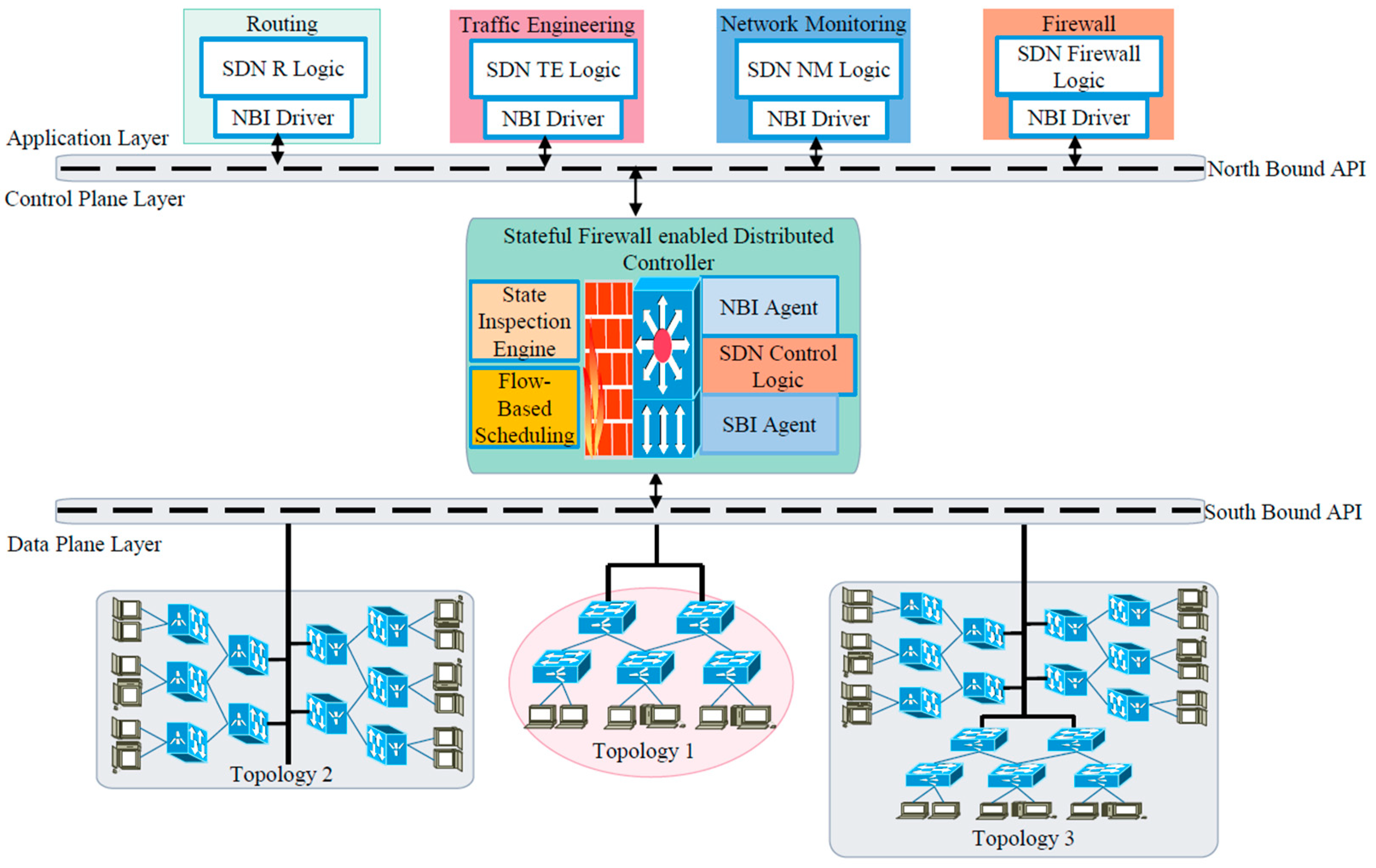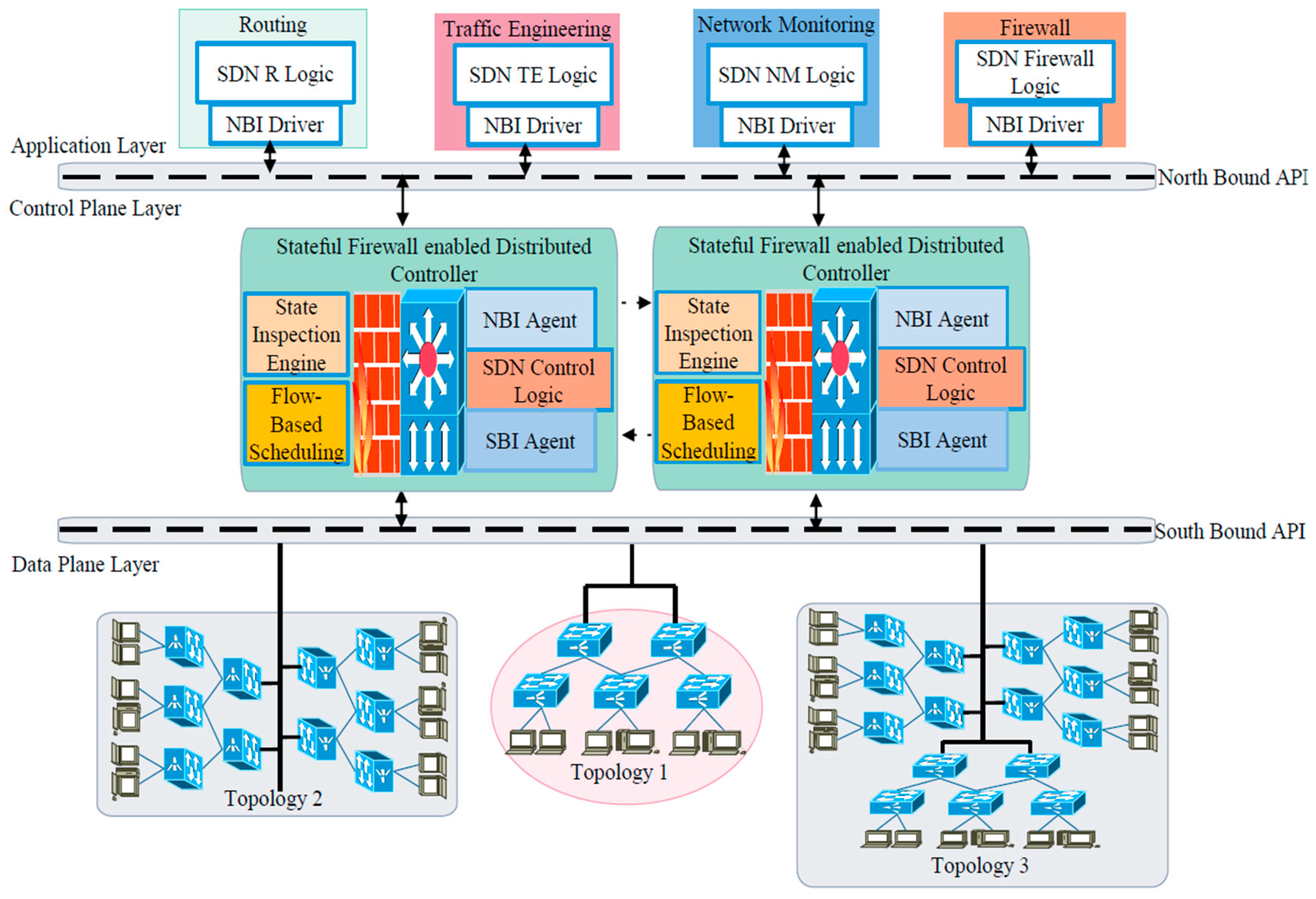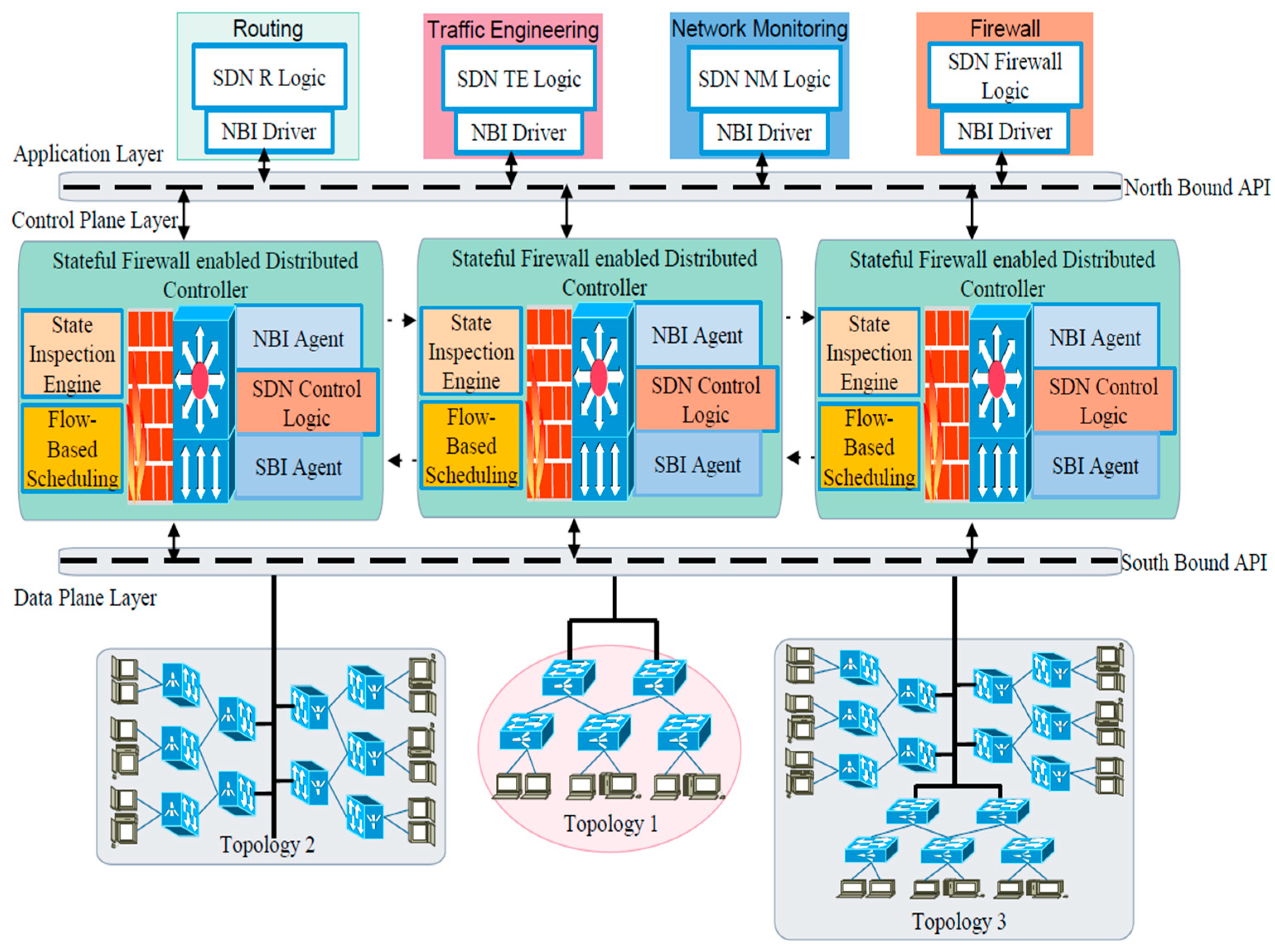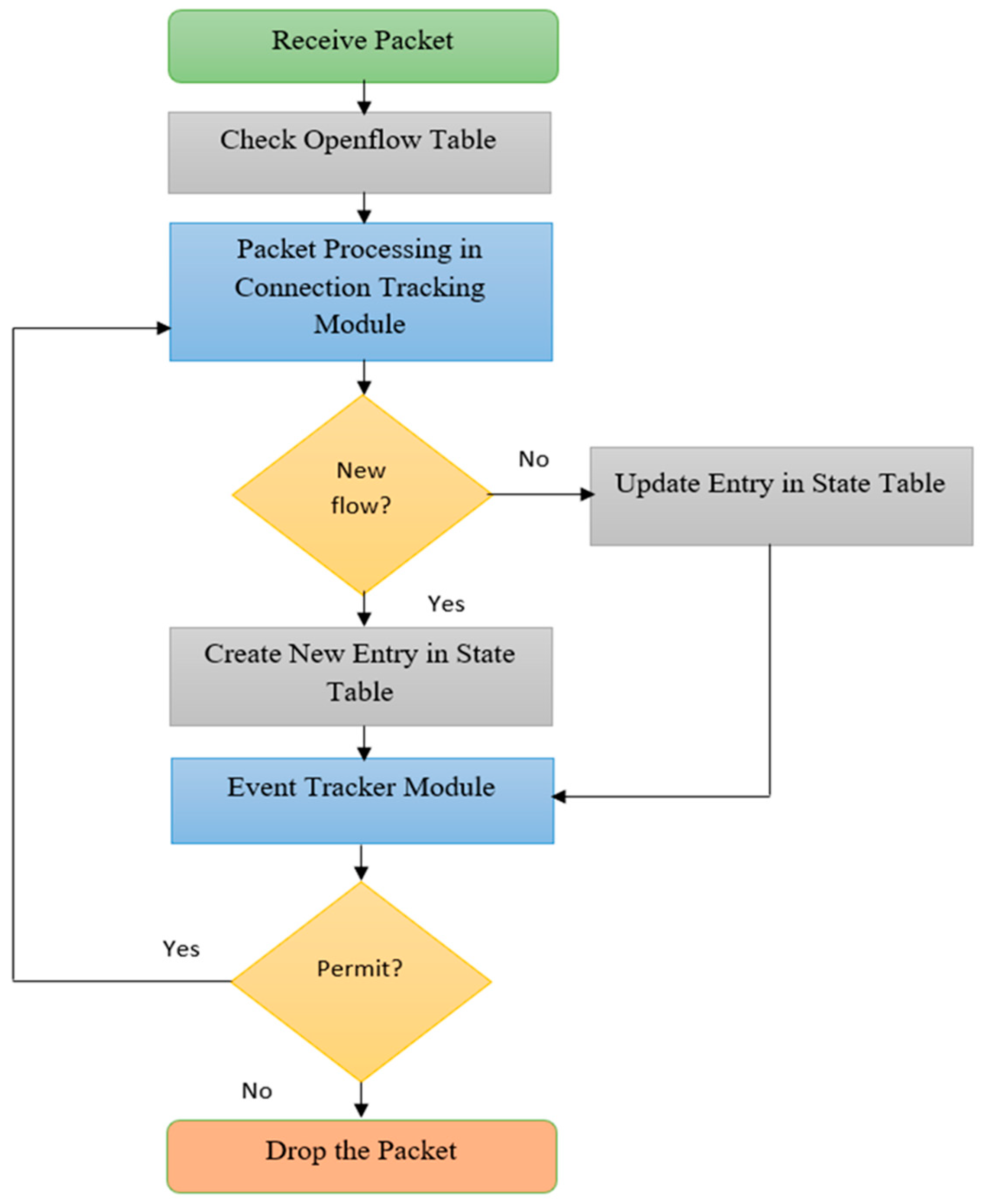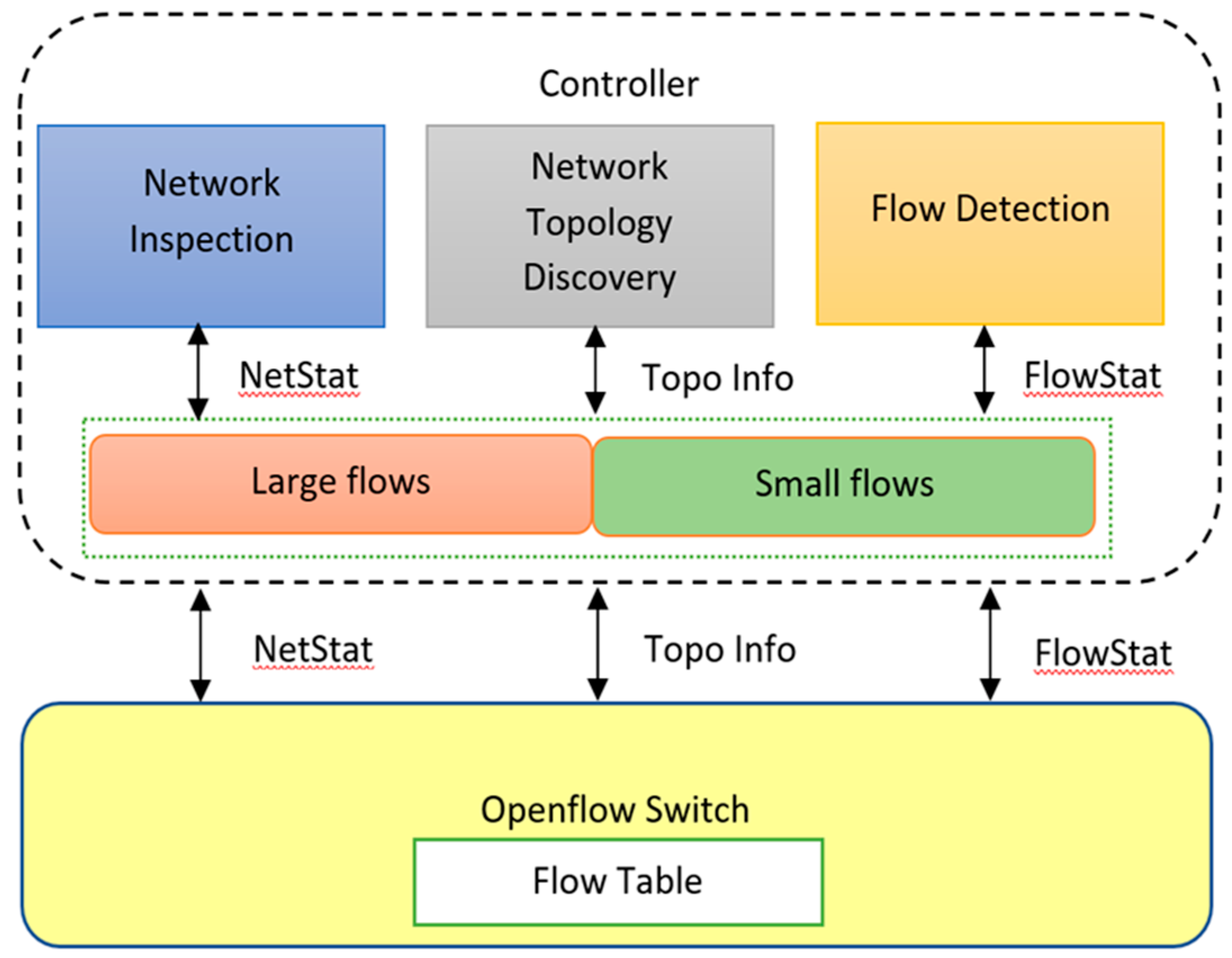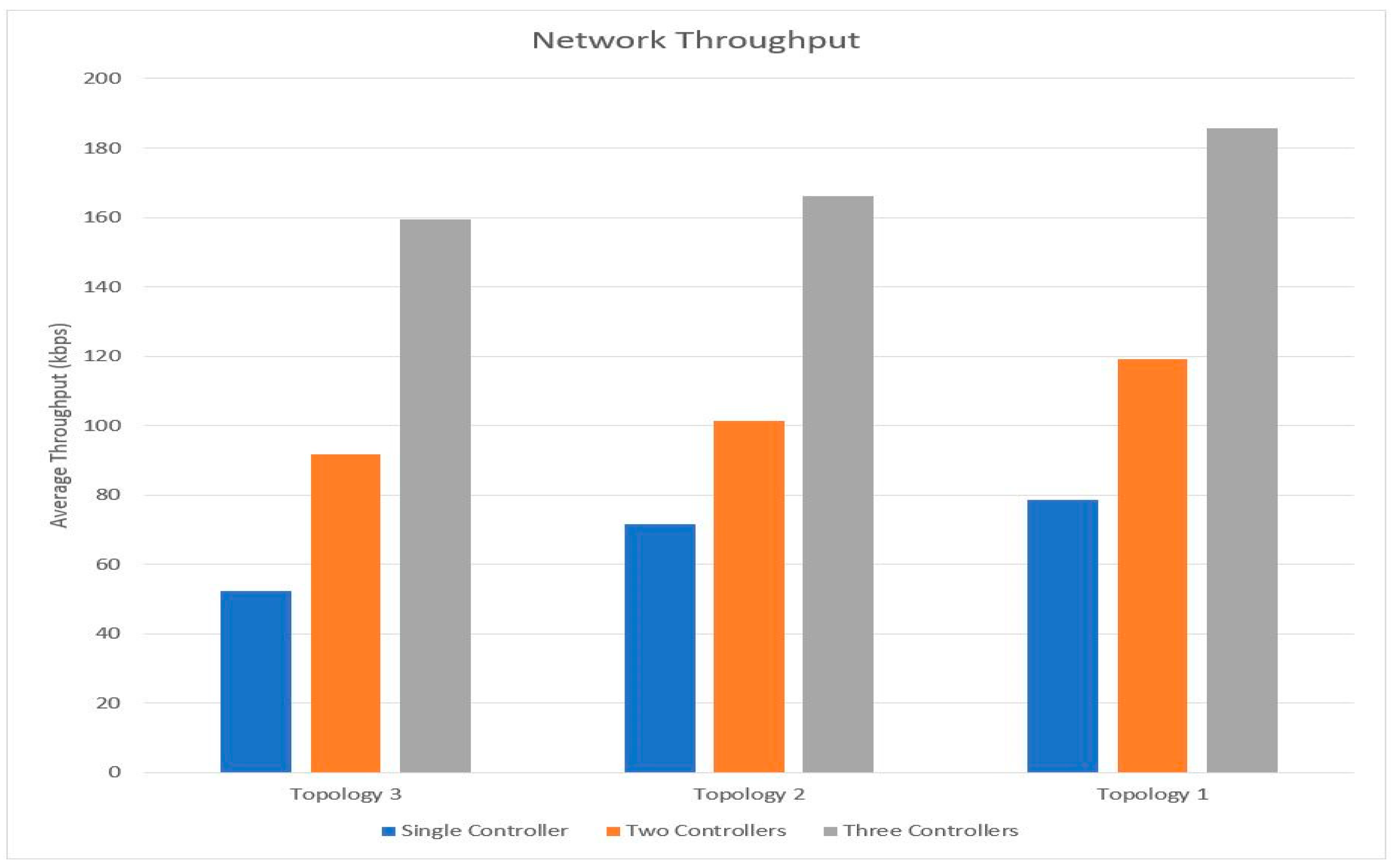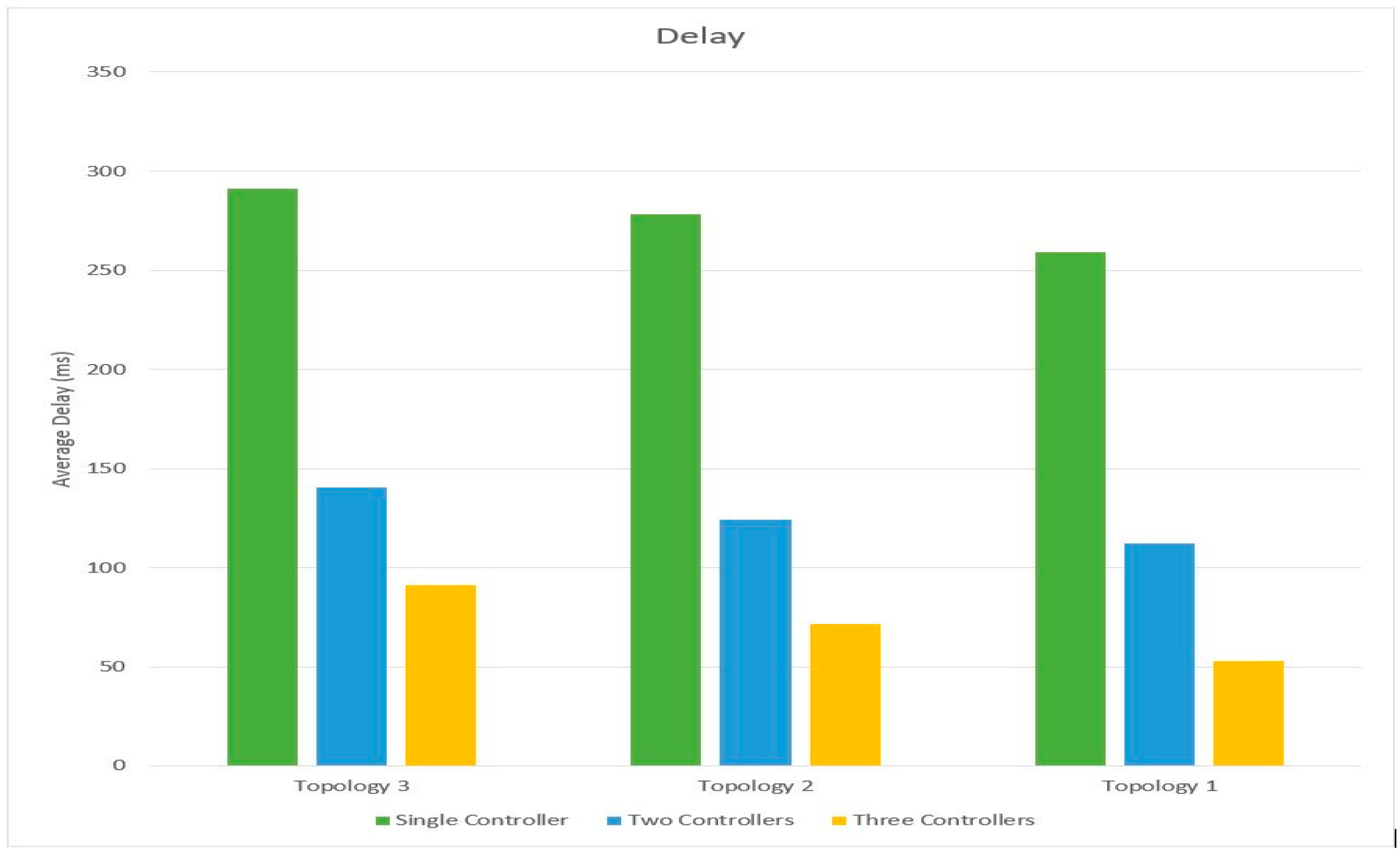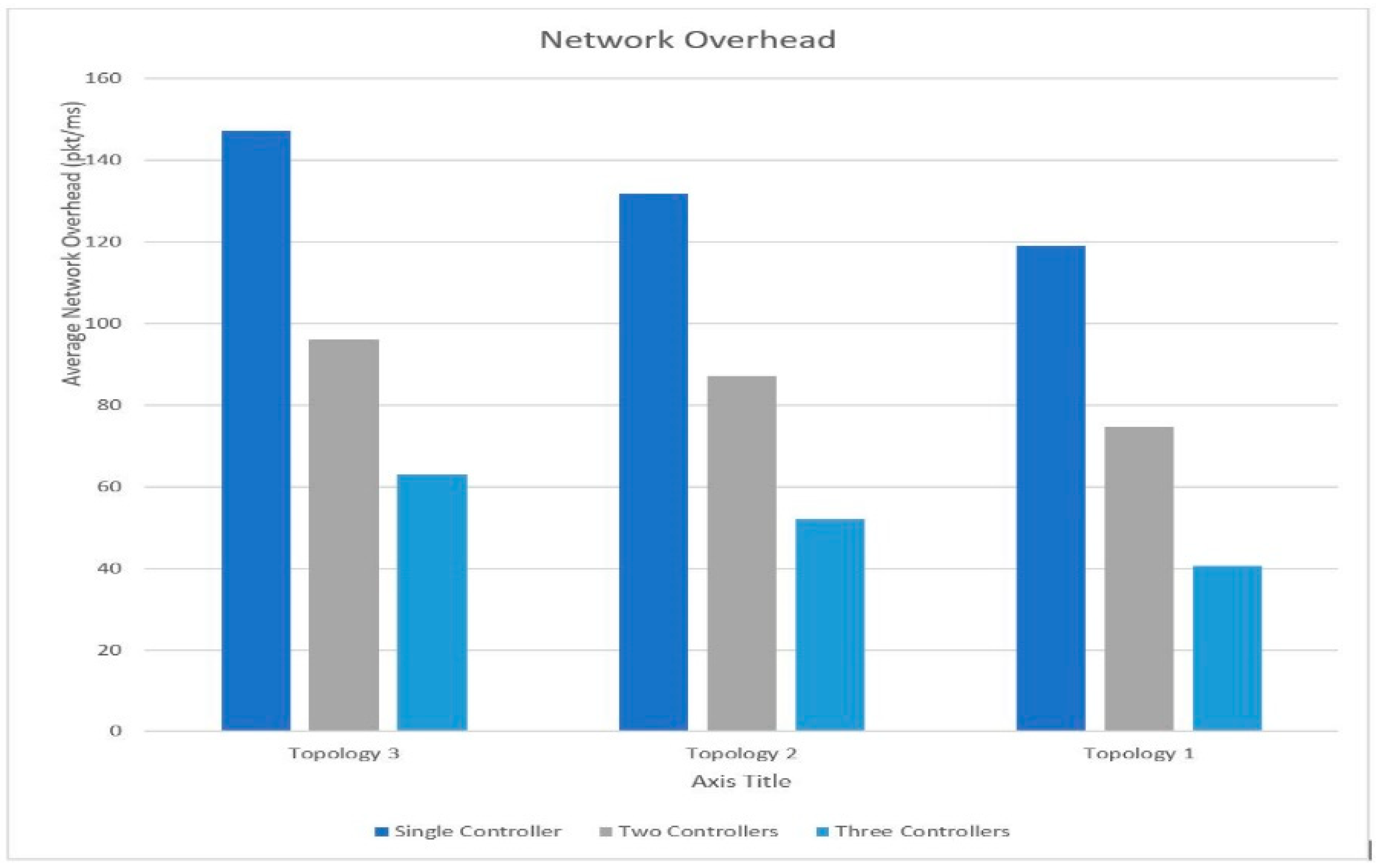1. Introduction
Nowadays, a network of devices influences our way of doing business and our way of living. Computer networks play a major role in everyday activities allowing users and their devices to connect. Recently, there has been an explosion of business applications allowing for dynamic collaboration among clients. Each of these businesses is different, but all rely on some form of a computer network to exchange information and data. More and more organizations are deploying information technology and working as part of a virtual team, giving their employees flexibility. This may mean they are performing complex work without having to join regular meetings and brainstorming sessions. Virtual teams tend to create independent groups that operate independently of each other, which creates real freedom for workers. However, as easy as it may be to work remotely for a business, it is equally important to create policies that ensure the safety of the whole team. These policies need to be established well in advance and adhere to all standards and guidelines.
By linking devices, data, and computers, interactions across remote users can be accomplished through a method known as networking. This makes it easier for users to share resources and information. To enterprises and individuals, networks are a crucial factor as they dramatically increase business activities. As internet-connected devices are growing daily with more and more information being transmitted between devices, it becomes harder to scale up the current network. Network growth is taking place to satisfy the demand, with almost all of the efforts going into manually configuring each switch and router. Many network features are configured throughout network devices in traditional networking, such as switches, routers, firewalls, and controllers. It becomes difficult to configure and reconfigure the network devices based on the fixed-set rules to adapt to varying traffic, errors and other network adjustments. Commonly, vendors implement and manage control planes in conventional networking systems. This makes the network equipment dependent on a specific vendor and forces the service provider to manually configure every piece of network equipment. In addition, network operators may fail to maintain the high reliability of the network.
Software-defined networking (SDN) is a distinctive network structure that centrally manages all network equipment to enable adaptive service control, faster time to market, and full automation of the network stack. The key to an efficient SDN architecture is a flexible, fault-tolerant infrastructure that can be dynamically reconfigured to meet changing network demands. Ideally, every virtual switch must have its own local SDN network to provide a high-level service that is defined at the network device layer and that can be configured by software. Network systems have traditionally been designed around a dedicated centralized network operating system and clustered control computers that handle the networking and switching functions. When SDN-enabled switches are used together with a distributed architecture, centralized management becomes difficult or impossible. To provide end users with choice, network operators need an integrated, software-based SDN architecture that can provide this centralized management capability with a high degree of flexibility. To address this challenge, industry leaders are developing new SDN systems with a fully open architecture. SDN systems that employ cloud-based SDN orchestration, or that adopt OpenFlow to perform network functions such as switching, routing, and security, provide the benefits of a centralized management platform. This level of flexibility is not possible with network operating systems. The service assurance component within SDN allows the network to self-optimize and self-regulate its network performance and quality of service (QoS). SDN also allows for software-defined security (SDS). SDN is ideal for today’s organizations to reduce the cost and complexity of their networks while improving efficiency and security, and SDN is particularly attractive for operators as they move to 4.5G and 5G for advanced services such as IoT and HPC applications.
SDN makes the network directly programmable through the decoupling of the data and control planes to abstract the network infrastructure for network applications and services. Throughout the SDN, the configurations are updated centrally or on a particular controller instead of modifying individual network device configuration for a simple change in the system. As the data plane is separated from the control plane, the control plane can dynamically handle multiple devices and instructs the data plane to transmit the data to a defined destination.
Figure 1 shows the architecture of SDN.
A dynamically managed network that offers flexibility, scalability, and adaptability to build a cost-effective network is possible with the help of SDN, a developing paradigm. SDN streamlines network components to enhance network performance and management for effective network administration. SDN uses OpenFlow (OF) as a communication protocol to allow the control plane and data plane to communicate with one another. Southbound interface (SBI) serves as an interface between the controller and the network component, enabling communication between the two controllers and, among other things, enabling the controller to modify the networking device’s data plane forwarding tables [
1]. Network elements in the same network are synchronized to send and receive update and discovery messages. The SDN controller functions as a proxy in a distributed setting or as a control agent for flows in a centralized setting under administrative control. In this manner, the network management layer, which is often accessible by a network OSS, may be fronted by the controller [
2]. The SDN controller serves as a crucial administrative interface for the hosts’ software switches and routers in a data center. Since they are in charge of the associated state for their transient network entities (via the agent), such as analytics and event notification, SDN controllers offer some management services in addition to provisioning and discovery.
Based on a global network perspective, the SDN controller determines a forwarding path for a specific traffic flow and then directs that forwarding path to the flow table of network elements. The received traffic flows are subsequently forwarded by switches in accordance with the flow rules established by the SDN controller. The primary function of a distributed firewall is to obstruct an attacker’s horizontal mobility that is not taken into account by current stateless SDN firewalls. Network policies can be implemented concurrently and in a flexible manner thanks to distributed SDN controllers. High network availability is provided by SDN with distributed controllers, which are made up of a group of controllers and handle the entire infrastructure. If there are any changes within a controller domain, the dispersed SDN controllers share the topology information so they can update their global network status to reflect the changes [
3].
The fundamental idea is to develop distributed controllers that would evenly spread the load throughout the network. In the symmetrical technique, there is no master for the SDN controllers. Each controller carries out a certain function and interacts directly with a number of other controllers to configure the network. The number of routing path requests that can be processed by an SDN controller is limited, which limits network performance. This problem is addressed by SDN with distributed controllers, which deploys a number of controllers to jointly operate the network. Network performance will be enhanced by the presence of many SDN controllers since they may distribute the network load among them. The ability of the SDN controller to control various flows from switches to destination routes is represented by the term scalability. To improve network stability, when one controller fails, another one will take over [
4].
In the centralized architecture, the dependability of SDN controllers can significantly decline. The status of the packet flow is not retained. Threats present in the SDN data plane are difficult to identify in the absence of packet status information. Before the advent of stateful firewalls, firewalls are stateless. Every traffic packet entering the network is separately inspected by a stateless firewall. Stateless firewall packet filtering does not take into account the nature of traffic patterns. As a result, this kind of firewall does not examine network packets or check the status of the connection before validating and allowing a packet into the network. State-conscious firewalls are now thought to offer improved network security and traffic control [
5].
Figure 2 shows the stateful inspection firewall.
In stateful inspection firewalls, the state table is kept up-to-date to manage connections across network applications, and the packet inspection functionality enables some new traffic flows to intelligently connect to pre-existing connections.
3. Literature Work
A stateful firewall-enabled SDN controlled network serves as a middlebox. The controller is designed to provide stability and durability with a failure prediction and recovery system, and to improve the network performance. In the SDN architecture, the stateful firewall secures the network by monitoring the links established and maintains track of the state information [
1]. SDN performance is analyzed by examining the network DoS threats and their impact on network bandwidth, using POX as the controller and mininet as the emulator by using TCP and UDP as traffic patterns [
2]. Several SDN controllers focus on building a hierarchical adaptive hybrid cluster with flexible load-balancing to request a large-scale SDN shift [
3]. A taxonomy of SDN access models is given as an expansion of the ONOS controller by expanding the northbound interface [NBI] in SDN architecture. SDN access model control features are utilized to provide control over distributed network infrastructure services [
4]. FlowGuard is proposed to address SDN datacenter firewall issues such as uncertain flow route calculation and weak scalability; it provides a solution for network threats by studying the mechanism of the attack [
5].
The FlowKeeper framework is proposed to eliminate security risks in the SDN data plane by enforcing control over the switch port to minimize the control planeload. FlowKeeper contributes to constructing a reliable data and stable control plane towards various attacks [
6]. The controller inspects the stateful data plane because the control plane does not normally monitor the flow state change, which could result in conflicting local flow states within the switches, and also the variances between the switch and the controller [
7]. Deep packet inspection gains the benefits of a programmable stateful SDN to minimize the processing load in packet filtering. The recommended computational power required by DPI and the link bandwidth for internal switches and DPI can be lowered collectively [
8]. StateSec tracks packets that match source and destination node socket data without using the controller to identify and counteract DDoS threats dependent on in-switch computing capability [
9]. The survey discusses securing SDN from DDOS attacks by limiting the controller packet flow rate. To reduce network time-outs and achieve enhanced access control, identical traffic flows are classified to detect DDoS attack packets [
10].
The distributed controller enhances the robustness and flexibility of the control plane and reduces the effects of network partition problems [
11]. A topology-conscious-specific firewall processing sends just the required firewall setup rules to reduce latency and control overhead, accounting traffic flows and network topology [
12]. This study proposes to build an OpenFlow-based firewall program over the SDN controller; the flow table rules are preconfigured to directly manage incoming flows without the support of dedicated hardware [
13]. An extended state machine is utilized in the stateful data plane processing as a superset to process actions in the OpenFlow table to achieve efficiency and reliability [
14]. Many security policies, such as DROP, REDIRECT, QUARANTINE, can be applied by software applications built in FRESCO scripts to respond to network attacks by simply setting a parameter for action [
15].
A flow-based distributed firewall model is trialed on an emulated network by designing around the features of OpenFlow, an open SDN standard [
16]. Once network states are modified, FlowGuard examines network flow path fields to identify firewall protocol breaches and implements automated real-time breach solutions [
17]. Using the Ostinato traffic generator tool, traffic size ranging from 64 bytes to 8950 bytes is created which is capable of achieving a maximum bandwidth of 9 Gbps [
18]. Three major issues in network administration are allowing rapid updates in network status, ensuring assistance in a high-level language for network setup, and offering improved access and control over functions for network monitoring and configuring [
19]. The switch extracts one out of every k packet from every input port for packet sampling. The header encapsulated information of the packet sample is transferred automatically to a controller repository. The controller determines the variety of flow statistics from obtained packet samples [
20]. With the case of multiple SDN controllers, network performance can be improved as the controllers can share the network load. The flat controller model in distributed SDN is perfect for managing network fault tolerance. Thus, flat and leaderless designs of distributed controllers can be used to create a stable and reliable network [
21].
In order to identify the optimum observation vector of the evolutional state, which most accurately captures the state change of the evolving social network, OEOA reconstructs the genetic algorithm influenced by quantum mechanics; to assess state change degrees and identify abnormal changes to report anomalies SeaDM integrates ESCA and OEOA [
22]. The caching strategy for D2D networks with numerous robot helper-aided caching moves the robot helpers to the best spots to increase system performance. With the help of the partitioned adaptive particle swarm optimization algorithm, the best places for the robot assistants can be discovered [
23]. Cobweb-based redundant through-silicon-via provides a solution for the most common network failure scenarios, that uses a compound Poisson distribution defect model to fix cluster damage by designing active hardware with a high repair rate [
24]. On two real-world datasets, the efficacy and reliability of ESTNet are demonstrated by modelling residual networks and stacking successive 3DCon to capture nonlinear and complex connections [
25]. KeyListener is an exploit that uses a smartphone’s audio hardware to infer keystrokes from touch screens and QWERTY keyboards. To minimize errors in acoustic signal attenuation-based keystroke localization, it monitors finger motions during inputs using phase change and the Doppler Effect. Security policies are developed using a context-aware binary tree-based search technique to increase keystroke correctness [
26].
Numerical findings inputs are utilized to analyze the Markovian arrival process (MAP) applied to a MEC system in order to assess the effects of the offload rate on response performance and energy efficiency, as well as the effects of a VM’s repair and service rates on availability, latency and energy [
27]. In a semi-supervised hybrid learning environment, hybrid PU-learning-based spammer detection (hPSD) for spammer identification permits the construction of classifiers. By injecting a variety of positive data to locate the hidden spammers, it may iteratively detect multi-type spammers [
28]. Target monitoring is accomplished by combining the marine integrated communication network system (MICN system) and UWSNs, which has resulted in higher service levels for a variety of applications, including data transmission, monitoring, and communication in the maritime environment [
29]. Access control methods, Q-learning-based routing, and related open risks are addressed by the magnetic induction (MI)-assisted wireless powered subsurface sensor network (MI-WPUSN), which also addresses major dependability issues [
30]. The challenges of complex cognition, making judgments in a high-dimensional action space, and self-adapting to system dynamics are discussed in the context of AI-powered MN design, a deep learning strategy that integrates cognition to make wiser judgments to ensure QoS and directly links the state of an MN to perceived QoS [
31].
The client nodes’ generated flow size is taken into account by the load balancing algorithm in use. Additionally, flows are categorized according to the dynamic flow size threshold value. By contrasting the performance of two load balancing algorithms with distributed controllers’ architecture, namely the flow-based load balancing algorithm and the traffic pattern-based load balancing method. The network’s availability, manageability, and scalability are all improved by a distributed SDN controller, which gets rid of the drawbacks of a centralized SDN controller design [
32]. In the SDN network, stateful firewall services are set up as VNFs to provide security and increase network scalability. The responsibility of the SDN controller is to create a set of standards and regulations to prevent dangerous network connectivity. These techniques cannot provide sufficient protection against intruder attacks that use multiple socket addresses [
33]. hSDN models in the control and data planes, as well as control plane placement and scalability management issues. Another field under investigation is linked security and privacy concerns, as well as current threats and weaknesses. The analysis is then assisted by examining recent security modules and network security systems, as well as investigating potential risk detection and mitigation methodologies [
34]. The POX controller uses OVS to connect with LRS just as it would with any other host. The packet forwarder system allows the controller to react to OpenFlow events like PacketIn and PortStatus by listening. The path finder module calculates the best routes via the network using the shortest path first algorithm and the LLDP module [
35].
A migration strategy uses a balanced communication overhead and migration overhead. The reinforcement learning approach is used to create a migration plan that maximizes cumulative revenue while balancing communication overhead and migration overhead [
36]. A policy-based routing algorithm is used in the network infrastructure to utilize the free IP addresses in the free IP pool. Due to the small flow table size in the SDN network, the technique provides optimal use of the available space in the flow table [
37]. The most crucial step in the development of an expert system is knowledge acquisition. Working out the rule set and the accompanying membership values for such fuzzy system is a challenging and time-consuming task for the consultants since the potential range of if–then rules of the fuzzy system will increase exponentially with the rise in the range of input [
38]. The nano-devices can be connected to the Internet due to a software module that transforms data formats and protocols between regular network domains and nano-network domains. A prototype of the module is created, and the performance of the suggested algorithm is assessed using the single tenant and multitenant communication situations [
39].
To create a small-size network subgraph, state information from prior optimization rounds is used. The resultant subgraph is then searched for a more advantageous solution than the Lagrangian relaxation-based strategy [
40]. Implementing information traffic utilizing optimal course determination and directing in heterogeneous vehicular organizations using a SDN-assisted approach in cases like a blockage in vehicle ad hoc networks (VANETs). The practical traffic reproduction model is put forth, and the trials produced results that improved the standard information flow structure in terms of Round-Trip Time (RTT) and Packet Delivery Ratio (PDR) [
41]. A Network State Base Cusp model differentiates between unstable and confusable instances. Unstable instances can be found using a technique called Unstable Instance Detection (UID). The evaluation findings show that LICENSE can increase the overall detection performance by lowering the number of unstable instances and increasing the detection precision of unstable instances [
42,
43]. The inner mapping combiner (IMapC) assisted in lowering the volume of intermediate results sent back and forth to the Redis instances by locally aggregating partial outcome within the network [
44].
These sections are divided by subheadings, to provide a concise and precise description of the experimental results, their interpretation, as well as the experimental conclusions.
4. Proposed Method
In stateless firewall filtering, it is an easy process to spoof or create fake traffic packets which can go through a network. But stateful inspection offers complete control over packets that pass through the network as it keeps a record of all links and their state information. The traffic might consist of a new packet, part of packet with the connection being established, linked to the previous packet or falsified packet. Depending on header field data such as source and destination IP and MAC addresses, port and sequence numbers, the state of the packet can be managed.
There are three major states in the TCP connections, link establishment, connection utilization, and link termination. A state table is typically used by the firewall to monitor the bidirectional connection across hosts and restrict packets which differ from its intended state. OpenFlow network communication protocol is used to enable distributed controllers to communicate the data plane elements to manage OpenFlow switches table entries for forwarding. Three network scenarios are built using tree topology, respectively, with single, two and three controllers and the number of switches vary as 5, 10 and 15. Scenario 1 has a single centralized stateful firewall-enabled controller to manage varying servers, hosts and switches. Scenario 2 has two stateful firewall-enabled distributed controllers to manage varying servers, hosts and switches. Scenario 3 has three stateful firewall-enabled distributed controllers to manage varying numbers of servers, hosts and switches. As the number of host machines ranges from four to twelve, number of switches ranges from five to fifteen and number of servers ranges from two to six.
In all three controller scenarios, the stateful firewall application is logically centralized on the proposed architecture. The stateful firewall inspects every incoming packet into the network and drops the packet which fails to pass the stateful firewall filtering rule and remaining packets are allowed into the network. Whenever there is a change in the firewall rule and state table information, the update messages are synchronized between the controllers. The advantages of a stateful firewall-enabled controller environment can benefit a network with several switches, where each switch will monitor the activities of directly linked hosts locally. An OpenFlow switch manages a listener module that maintains a record of stateful connection outcomes. Thus, the local flows are monitored based on flow rules and can detect fake flows based on three-way handshake connection information. When flows are monitored based on flow rules, it is noticed that the fake connection created by client hosts sends
SYN packets first and the server sends
SYN-ACK as a reply. Instead of sending
ACK as a reply, the attacker client transmits data which leads to a full TCP connection. In Equation (1)
Tf represents the threshold value to detect the fake connection.
If the threshold value is exceeded then the event tracker detects and updates the flow table. Then the connection request packet sent from the attacker client is forwarded to the controller. When this process happens repeatedly the control plane gets populated with connection request messages and it leads to an increase in controller load. Thus, to detect and eliminate such attacks, stateful analysis and inspection is enabled in the controller.
Packets in and out of the FTP and web servers were captured and monitored using the Wireshark packet sniffing tool. A three-way handshake by TCP traffic was captured in FTP and web servers during the FTP and web sessions. Fake sessions were created and sent using an Ostinato Traffic Generator from the client machines. The created duplicate sessions acted as already established with [
SYN = 0;
ACK = 1] and stateful inspection detected that the source port number of the fake session completely differed from the established current session. The fake traffic created and sent could not be detected while monitoring the FTP and web servers using the Wireshark tool. The stateful inspection firewall blocked the duplicate packets by verifying the state table information. POX [
45] was configured as a centralized and distributed controller. The key reason to select POX controller was that it is a simple lightweight controller which requires minimal hardware resources for installation. The POX controller can handle one or more diverse applications like firewall and load balancing centrally.
The response time of the POX controller is less compared to other existing python-based controllers. The POX controller implemented in an emulated tool is compatible with a real-time environment, the controller configuration is set up in an emulation tool and can be used in real hardware with minimal changes in the code. The mininet emulator was used to emulate the SDN network and evaluate the performance of the network, File Transfer Protocol (FTP) traffic and web traffic was generated as network transfer data inside the emulated network. This work compares and analyzes the network performances of the three network scenarios. A single centralized stateful firewall-enabled SDN controller network is compared against distributed stateful firewall-enabled SDN with two and three controllers.
In the proposed SDN architecture the topologies were implemented and examined one by one, independently. In the first scenario, the single centralized controller setup was deployed with topology 1(four hosts, five switches and two servers), topology 2 (eight hosts, ten switches and four servers) and topology 3 (twelve hosts, fifteen switches and six servers). In the second scenario, two distributed controllers were deployed with similar topologies (1, 2 and 3). In the third scenario, three distributed controllers were deployed with three similar topologies (1, 2 and 3).
4.1. Openflow Protocol
OpenFlow is the most prominent protocol that enables SDN functionality to be integrated into the network of the datacenter.
OpenFlow [
46] switches have flow tables that direct traffic across devices on the data plane. Each OpenFlow switch operates based on its flow table T, where the stateful inspection firewall can define traffic flow rules as
R1 (rule 1) to
Rn (rule n).
Each flow rule defined is comprised of rule priority Rp, transport layer protocol information P, whether it is TCP or UDP or FTP. Header field information H includes transport header to data layer header, rule action set information As, and flow statistics information Fs.
Thus, the flow rule R in switches is defined as R = {H, P, As, Rp, Fs}. The flow rule statistics Fs consists of information about each packet’s flow length L and packet size Sp, Fs = {L; Sp}. The header field H of the rule table comprises the source and destination physical address (Sp, Dp), Source IP address and destination IP address (Si, Di), and source and destination port number (Sp, Dp) and port number of incoming packet’s physical port Ip. Thus, the header field of a packet can be defined as H = {Sp, Dp; Si, Di; Sp, Dp; Ip}.
4.2. Scenario 1: Centralized Stateful Firewall-Enabled Single Controller SDN
In Scenario 1 a single centralized POX controller which was tested independently with three different tree topologies. Topology 1 consisted of five switches, among them two switches were connected to the controller, two servers and four hosts, Topology 2 consisted of 10 switches, among them four switches were connected to the controller, four servers and eight hosts. Topology 3 consisted of 15 switches, among them six switches were connected to the controller, six servers and 12 hosts, respectively. All three-network setups were configured to handle FTP and web traffic flows.
Topology 1 was created with five switches, among them two switches were connected to the controller, one web server, one FTP server and remaining four hosts were configured as the client machine to generate and handle FTP and HTTP packets. Topology 2 was created with two web servers, two FTP servers and the remaining 8 hosts were configured as the client machine to generate and handle FTP and HTTP packets. Topology 3 was created with three web servers, three FTP servers and the remaining 12 hosts were configured as the client machine to generate and handle FTP and HTTP packets. The Ostinato traffic generator was configured in the client machine to generate web and FTP packets locally. The Wireshark packet sniffing tool was configured in web and FTP servers to monitor traffic flows. Openflow switches were used to connect clients and servers by exchanging the connection information. All three topologies were implemented separately, and the SDN controllers handled and controlled the traffic of the respective topologies individually. The Scenario 1 experimental setup was tested with three separate topologies and a summarized view of the topologies is shown in
Figure 3.
The stateful inspection firewall algorithm was proposed to receive and inspect the ingress and egress packets and make a decision whether to permit or drop the packet into the network. The stateful inspection firewall was enabled in POX controller and the steps in Algorithm 1 are described below
| Algorithm 1: Algorithm for centralized stateful packet filtering |
| Input: R states firewall rule, H states Packet Header, ST states State Table, Sr states server and RT states Firewall Rule Table |
| 1: Start Network |
| 2: Check Network Connectivity; |
| 3: Set Firewall Rule ← rule = R.add (FTP && HTTP = = allow): |
| 4: Receive the packet; |
| 5: Network Self-Test ← mac = H.find (mac); |
| 6: If (mac.find( ) = = 0:0:0:0) then; |
| 7: Drop packet; |
| 8: Else |
| 9: Inspect State Table traffic flow ← flow = ST.find (flow); |
| 10: If (pckt.find ( ) = = flow) then; |
| 11: pckt.send (Sr); |
| 12: Else |
| 13: Apply Firewall Filtering ← rule = RT.match (rule); |
| 14: If (rule.match ( ) = = allow) then; |
| 15: pckt.send (ST); |
| 16: Else |
| 17: Drop packet; |
| 18: Endif |
| 19: Endif |
| 20: Endif |
| 21: END |
Steps 1 to 7: Start the POX controller and check the connectivity between OpenFlow switches and controller. Set a rule on the controller to allow client machines to access FTP and Web servers. Initial network sanity test is completed. The traffic flow is allowed into the stateful firewall filtering procedure when it passes the sanity check or drops the packet.
Steps 8 to 11: State information of the incoming packet is analyzed and the packet is sent to a particular server if a match is identified in the state table.
Steps 12 to 21: The received packet is subjected to stateful filtering. If a rule match is found then the packet information is stored on the state table. If not drop the packet.
All the network traffic flows were directed to a centralized SDN controller for stateful packet inspection and packet state entries were added to the state table. This process can rapidly overload the centralized SDN controller. If the network link monitoring is activated on centralized SDN controller the intruder could initiate attack programs which can saturate and overload the control plane. As a result, a distributed controller environment is required for datacenter SDN.
4.3. Scenario 2: Distributed Stateful Firewall Enabled SDN with Two Controllers
Figure 4 shows the Scenario 2 experimental setup.
It was created with two distributed POX controllers which were tested independently with three different tree topologies. The rest of the experimental setup parameters which include network topologies, traffic generation and network monitoring were identical to scenario 1.
4.4. Scenario 3: Distributed Stateful Firewall Enabled SDN with Three Controllers
Figure 5 shows the Scenario 3 experimental setup. It was created with three distributed POX controllers which were tested independently with three different tree topologies. The rest of the experimental setup parameters such as network topologies, traffic generation and network monitoring were identical to scenario 1 and 2.
The distributed stateful firewall inspection algorithm was designed to receive a packet and keep track of the connection between controllers and OpenFlow switches. Stateful firewall inspection was enabled in both the controllers to filter malicious traffic into the network.
Steps 1 to 3: Start all the POX controllers in parallel and check the connectivity between the distributed controllers and OpenFlow switches and receive the incoming packets and requests into the network.
Steps 4 to 8: The incoming packets and their connection status are examined. If the examined connection is active at that moment the corresponding packet is sent to the state table module to process and update packet status in the state table.
Steps 9 to 18: The packet is sent to event tracker and subjected to stateful filtering. If the packet matches the permit rule, the packet information is forwarded to the OpenFlow table, or else the packet gets dropped.
Figure 6 shows the flow for Algorithm 2.
| Algorithm 2: Design for Distributed Stateful Inspection |
| Input: OFT states Openflow Table, STM states State Table Module, ST states State Table and ET states Event Tracker |
| 1: Start |
| 2: Check Network Connectivity; |
| 3: Receive Packet; |
| 4: Examine Openflow Table to trace connection ← pkt = OFT.find (pckt); |
| 5: If (pckt.find ( ) = = active) then; |
| 6: pckt.send (STM); |
| 7: Update State Table ← pkt = ST.update (pckt); |
| 8: pckt.send (ET); |
| 9: Else |
| 10: pckt.send (ET); |
| 11: Inspect and Validate the Packet ← rule = ET.match (rule); |
| 12: If (rule.match ( ) = = allow) then; |
| 13: pckt.send (OFT); |
| 14: Else |
| 15: Drop Packet; |
| 16: Endif |
| 17: Endif |
| 18: END |
A fake packet is generated from a client machine and sent to the web or FTP server through the controller. The created connection is tracked and sent to the event tracker module. The event tracker verifies the connection information and finds that the packet received is fake and drops the packet. The scalability and reliability of the distributed controller network are better as they share the incoming traffic between them and prevent a network bottleneck problem. The distributed SDN controllers synchronize with each other to update changes in the network and are logically centralized to efficiently manage data plane elements. The controller updates whenever the topology changes, a new switch is added or an existing switch is removed, a new link is configured or an existing link is removed or there is a change in network policy. In the distributed controller environment when a controller detects a new element or removal of an existing element, or when a controller goes down, a notification message is sent to other controllers instantly. Hence the controller load is reduced in the distributed stateful firewall, which filters the duplicate connection much efficiently than a centralized stateful inspection with increased performance.
4.5. Flow-Based Scheduling Module
The flow-based scheduling module shown in
Figure 7 is configured in the stateful firewall-enabled distributed controller which manages and schedules control flows by differentiating the traffic pattern as large and small flows and dynamically allocating a path based on network load information.
Steps in flow-based scheduling module
Network topology discovery: This sub-module is configured in the controller to acquire link status information between OpenFlow switches and controllers, so that it can maintain an overall view of the network topology.
Network Inspection: is responsible for regular monitoring the connection information between OpenFlow switches, distributed controllers and link utilization status.
Flow detection: classifies the current flows as large flow or small flow by continuous comparing and analyzing of incoming flows with the pre-configured flow-based scheduling module. Initially there is no prior knowledge of flows on the flow-based scheduling module. The flows are classified based on file size distribution across the network and flow completion time. When a communication is established initially there will quick exchange of packets which are marked as small flows and an extensive transmission of data which are marked as large flows. When a flow is identified as large flow it is sent to a large flow sub-module or the flow is sent to a small flow sub-module. From there, the paths for respective flows are assigned with a view to the network link load information.
The paths for large flows and small flows are classified and paths for the respective flow selected by calculating every probable shortest path with maximum bandwidth. When all probable shortest paths are found, the best shortest path (
Flowsp) is selected as mentioned in Equation (2).
Thus, the proposed flow-based scheduling module helps in minimizing overall network response and reduces the overhead of the network to improve network scalability and performance. The proposed work has both stateful packet inspection and flow-based scheduling features with distributed controllers. When the flow reaches the controller, it is filtered and classified to route the packet to its destination. The header field of the packet is analyzed to record network connectivity details such as IP addresses of source and destination, port addresses of source and destination, current session details and packet sequence identifier. By analyzing the incoming packets, the stateful firewall tracks the traffic and their state table details. If the state table contains no current link information, then the packet is subjected to stateful packet inspection. When the packet is allowed by the firewall rule it is permitted in and out of the network and the firewall events are recorded in the session table. If the packet fails the firewall filtering rule, the respective packet gets dropped. Thus, a stateful firewall application is designed to block malicious packets by functioning as an intrusion prevention system.
